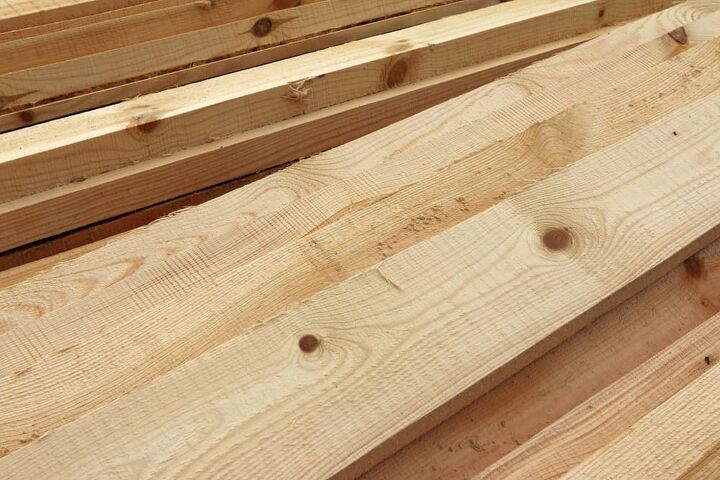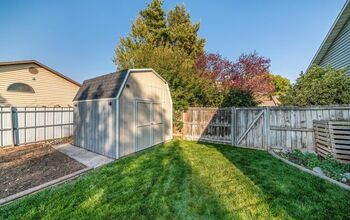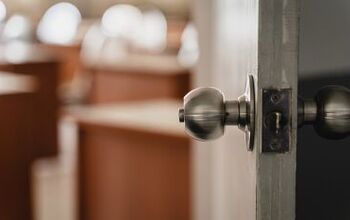Whitewood Vs. Pine Wood: What Are The Major Differences?

When it comes to home improvement projects and woodworking hobbies, few things matter as much as the wood you have. Using the wrong type of wood can lead a project to failure while using the right type will make your project an heirloom-quality result. Whitewood and pine are two of the most popular woodworking materials, but which one is right for you?
When it comes to the differences between whitewood and pine, whitewood tends to have more knots than pine. It would be hard to tell the difference with both kinds of wood sitting side by side. Also, whitewood has a creamy paleness to it, while pine is just a bit darker.
If you are looking to use either wood on a project, it can be helpful to understand what you should expect. This guide will help you understand why you might want to pay a premium price…and why most people consider these two woods interchangeable.
Do You Need to Hire a Framing Contractor?
Get free, zero-commitment quotes from pro contractors near you.

What Is Whitewood?
Liriodendron tulipifera is the botanical name for whitewood. Tulip, fiddle tree, tulip poplar, American tulip tree, and yellow poplar are other names.
Whatever you call it, it is the world’s tallest hardwood tree, reaching heights of more than 160 feet. The tree’s height is what makes it one of the most expensive wood trees on the planet.
It is also the tree that grows the fastest. The flowering season begins in April, with pale yellow or green flowers emerging in the spring. The blossoms are sometimes white as well.
Whitewood is the most indigenous of the three states in the United States. Indiana, Tennessee, and Kentucky are included.
What Is Pinewood?
Pine trees are a type of softwood tree that may be found worldwide. Pine has several characteristics that make it an excellent choice for furniture building. It offers good shock resistance and outstanding rigidity, and Woodworkers favor pinewood because of these factors.
It is simple to work with due to its delicate nature. Pine furniture is popular all around the world. It was traditionally used to create rustic and colonial-style furniture. However, it is now utilized for a wide range of furniture types, including contemporary items.
Pine has a light color that is predominantly creamy or white in appearance. Some of them, though, are yellow. Pine is easy to paint or stain because of its light color. It enables you to create whatever hue you like.
Differences Between Pinewood And Whitewood
In terms of usage, whitewood and pine are fairly interchangeable. Their body has similar densities, similar appearances and are easy to work with.
That’s why they’re so popular and why you can buy them up in any significant lumber store. Even one type of pine is sold under the whitewood label: Southern Yellow Pine, or SYP. However, they are technically not the same thing.
Whitewood and pine are two different types of wood, and it’s important to be aware of the subtle differences. To make things easier, we’re going to break it down by color, knots, density, usage, durability, and pricing.
Color
If you take a quick look at pine and whitewood, it’s going to be hard to tell which is which. However, there is a slight difference. As the name suggests, Whitewood has a creamy, pale hue, and it’s one of the lightest woods you can buy on the market, which makes it excellent for staining.
Pine is similar in terms of shading and color, especially if you choose Southern Yellow Pine. However, pine is ever so slightly darker than whitewood.
In most cases, you have to have them side by side in order to be able to tell. Both can be easily stained, so you need not worry about that aspect of construction.
Knots
Though this can vary from batch to batch, whitewood tends to be more knotty than pine. For people who are not used to working with wood, knots can be a somewhat tricky thing to work with. Knots can cause snagging with some types of saws and can also make it challenging to keep textures uniform.
Fewer knots mean less workarounds and less problems while cutting. This is why pine is often considered to be the easier option for most projects.
Though pine is the go-to for beginners, it’s still worth repeating that whitewood can suffice too. In fact, if you’re just practicing cuts on wood, whitewood makes for great scrap.
Density
The density of both woods is fairly hefty, which is why people prefer to use both types as a building material for items that will be used for years to come.
Though there can be slight differences in the specific type of pine that’s used, pine typically tends to be a teensy bit denser. This makes pine the better bet for people who want a seriously solid design.
With both of these wood types, you can expect them to work well with paint removal and stains. They also work well with most wood paint strippers, so there’s plenty of ease when it comes to maintenance.
Usage
Most casual woodworkers will make a point of using both woods interchangeably, and for the most part, you can.
However, whitewood is better suited to simple projects, such as doors, cabinet accessories, furniture, handles, and petite ornamental items. Pine is deemed to be the more versatile material to work with, primarily due to its heavy density and lack of knots.
If you use pine, you can make anything that you can make with whitewood. However, you also will be able to use it for more load-bearing work, such as flooring, tables, and cabinetry.
Though some people do use whitewood for pine purposes, it’s generally not seen as a good idea because some types of whitewood are just too soft for that kind of task.
Durability
Both whitewood and pine are known for being durable. In fact, when well maintained, you should expect both to be able to last 15 years or more.
However, there’s a small difference between the two that actually isn’t that small. Whitewood is softer and is more prone to water absorption. This makes it more prone to rotting and warping.
If you are not willing to do a ton of maintenance on your whitewood, then you probably will find it to be too much. This is why whitewood loses out when you need to make something for the outdoors. It’s just too susceptible to the elements to be worth trying to cut corners for price’s sake.
Price
Ah, yes. Here we go with the big issue that often makes or breaks a project’s plans: pricing. Considering the thicker density, the richer coloring, and the ease of use, it’s not surprising that pine is going to be the pricier pick. Pine boards are often $10 a pop, while whitewood can be as little as $5 to $8, depending on the retailer.
Which Wood Should You Use For Your Project?
Both kinds of wood can be used in the same vein of projects, there are a couple of minor differences that may sway you one way or another.
If you are doing smaller projects that require careful cuts and a decorative touch, whitewood is the better option. This is especially true if you want to take into account things like budgeting.
On the other hand, if you’re looking for a sturdier wood type, it’s clear that pine is the winner. There’s a reason why pine is considered to be the standard material for most projects, and it deals with the durability that it offers builders. When in doubt, going with pine is a smart move.
Does It Matter What Kind Of Wood You Use?
With most construction projects, it really won’t. However, if you are expecting your construction to bear a lot of weight, it’s just a better option to go with pine. Considering that the two are frequently used interchangeably, the biggest difference that most people would notice is the price.
The only time when you’re really going to notice a difference is when you are making something for the outdoors, such as a picnic table or a bench. Due to the high propensity whitewood has for warping and cracking, pine is generally considered to be the better material. In these cases, the investment is worth it.
Why Is Southern Yellow Pine Sold As Whitewood?
This is a great question, and this actually has more to do with this pine’s texture than anything else. Most pine woods are fairly sturdy and a little richer in color than Southern Yellow Pine. To a highly trained eye, SYP has more in common with typical whitewood than it does with other pines.
Since SYP is lighter in both color and density, it’s often better described to people as whitewood rather than a true pine. As a result of that difference, many stores just choose to tell buyers that the yellow pine is a form of whitewood. It’s easier than explaining why two identical types of wood are sitting next to each other.
Do You Need to Hire a Framing Contractor?
Get free, zero-commitment quotes from pro contractors near you.

Related Questions
What kind of tree does whitewood come from?
Whitewood is a type of wood that comes from the tulip tree, often known as American tulip tree, tulip poplar, or yellow poplar.This tree is native to parts of Appalachia and is most commonly associated with the state of Tennessee. Due to its prevalence, it also happens to be a state symbol of Kentucky and Indiana.
Are whitewood and pine considered to be hardwoods or softwoods?
Though they are fairly dense and durable, both whitewood and pine are considered to be softwoods. Good softwoods to choose from include pine, whitewood, or Douglas fir.If you are in need of a hardwood, it’s better to check out woods like teak, cherry, silver maple, or a rich black Eastern walnut for your purpose.
Can you use softwood for flooring?
When it comes to making flooring, hardwood floors are the best bet. That’s why you see upscale homes with cherry or oak, finished off with a nice stain. However, that doesn’t mean that softwood flooring is a bad idea. Softwoods are excellent for adding a classy and modern take and often have a lighter hue than hardwood.If you have a room that doesn’t have much traffic, such as a bedroom, then there’s no reason why you can’t use softwood as a flooring option. The one thing you have to keep in mind is that whitewood is still a softer material. So if you were hoping to put bulky items on your flooring, you may need to reinforce it first.
Related Guides

Ossiana Tepfenhart is an expert writer, focusing on interior design and general home tips. Writing is her life, and it's what she does best. Her interests include art and real estate investments.
More by Ossiana Tepfenhart



























